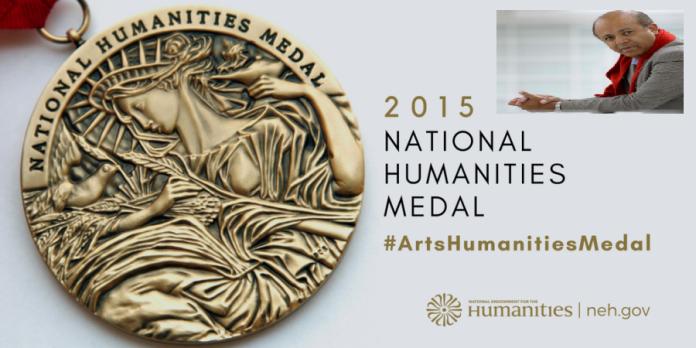Indian-American physician-author Abraham Verghese, whose work has emphasised empathy in medicine, has been selected for the 2015 National Humanities Medal. President Barack Obama would confer the honour upon Verghese, along with 11 others, on September 21.
About Abraham Verghese :
Abraham Verghese(born 1955) is a physician-author, Professor for the Theory and Practice of Medicine at Stanford University Medical School and Senior Associate Chair of the Department of Internal Medicine.

- He is also the author of three best-selling books, two memoirs and a novel. In 2011, he was elected to be a member of the Institute of Medicine.
- He was born in Ethiopia to parents from Kerala, India, who worked as teachers. In 2009, Knopf published his new book and first novel, Cutting for Stone.
- In 2010,Random House published the paperback version of the book and since that time, it has risen steadily up the bestseller charts, ranking #2 on the New York Times trade paperback fiction list on March 13, 2011. It has been on the New York Times list for well over two years.
- After finishing his medical degree (MBBS) from Madras University in 1979, and then completing his internship there, he came to the United States as one of hundreds of foreign medical graduates (FMGs) from India seeking open residency
- As he described it in aNew Yorker article, “The Cowpath to America”, many FMGs often had to work in the less popular hospitals and communities, and frequently in inner cities.
- He opted for a residency in a brand-new program in Johnson City, Tennessee, affiliated with East Tennessee State University. He was a resident there from 1980 to 1983, and then secured a coveted fellowship at Boston University School of Medicine in 1983, where he worked for two years at Boston City Hospital and where he saw the early signs of the urban epidemic of HIV in that city.
- Returning to Johnson City in 1985 as assistant professor of medicine (he later became a tenured associate professor there), he encountered the first signs of a second epidemic, that of rural AIDS.
- His work with the patients he cared for and his insights into his personal transformation from being “homoignorant”, as he describes it, to having an understanding of his patients resulted a few years later in his first book,My Own Country.
About National Humanity Award :
The National Humanities Medal is an American award that annually recognizes several individuals, groups, or institutions for work that has deepened the nation’s understanding of the humanities, broadened our citizens’ engagement with the humanities, or helped preserve and expand Americans’ access to important resources in the humanities.
- The annual Charles Frankel Prize in the Humanities was established in 1988 and succeeded by the National Humanities Medal in 1997. The initial design for the National Humanities Medal was created by a 1995 Frankel Prize winner, David Macaulay, and was used for all recipients through 2012.
- During 2013, The National Endowment for the Humanities ran a public competition for a new medal design, judged by metalsmith Chunghi Choo, coin engraver Don Everhart of the U.S. Mint and sculptor George Anthonisen. In June 2013, the agency announced that a design by Paul C. Balan of Illinois had been selected as the winner.
- The final medal will be unveiled in Washington D.C. in November 2013. The new design was used for the first time for the 2013 National Humanities Medals, which were presented in mid-2014.
- Medals are conferred once annually, usually by the U.S. President, to as many as twelve living candidates and existing organizations nominated early in the calendar year. The President selects the winners in consultation with the National Endowment for the Humanities.
NEH asks that nominators consult the list of previous winners and consider the National Medal of Arts to recognize contributions in “the creative or performing arts”.





